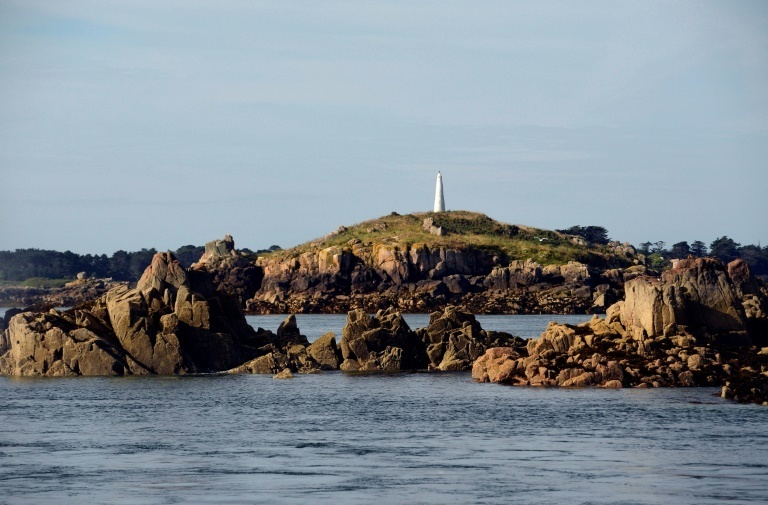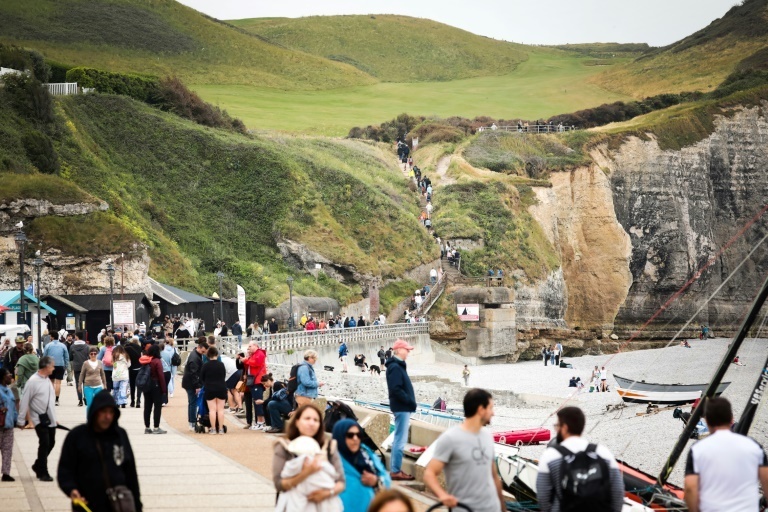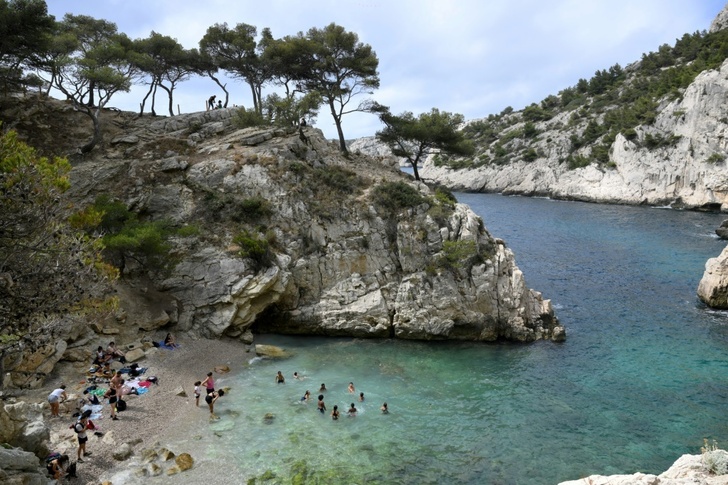Faced with surging numbers of visitors to historic landmarks and natural treasures, France wants to put a lid on the tourist crowds that flood in each year -- though officials recognise it won't be easy.
Tourism minister Olivia Gregoire unveiled Sunday a plan to regulate visitor flows at the most popular sites and lay out a strategy against "overtourism".
She said France, the world's biggest tourist destination, particularly needed to better manage the peak-season influxes that threatened "the environment, the quality of life for locals, and the experiences for its visitors".
The issue is urgent for prime destinations worldwide as international travel surges after Covid-19 lockdowns. Many of the most revered French sites, such as the Mont-Saint-Michel abbey in Normandy, say they are being overwhelmed by the number of visitors.
On the famed Channel beach of Etretat -- which saw a tourism surge thanks to the plot of the hit Netflix detective series "Lupin" -- the 1,200 residents see up to 10,000 tourists a day in the high season.
"This massive influx ends up trampling and eroding the cliffs and endangers the beach cliffs," said Shai Mallet, co-head of the Etretat Tomorrow residents' association.

The government's announcement comes as Paris, which is grappling with a housing shortage in part because homeowners prefer short-term rentals to tourists, said last week it expects 37 million tourists this year, just short of the pre-pandemic level of 38.5 million in 2019.
Limits are already being set, with officials capping day visits to the gorgeous Brittany island of Brehat at 4,700 during the peak summer months.
And the Calanques national park near Marseille has said it will maintain for the next five years a free reservation system for visiting the renowned Sugiton coves that was first implemented during the Covid-19 pandemic.
The site, reachable by a one-hour hike, now lets in just 400 people per day in July and August, compared with up to 2,500 previously.
"There is no miracle solution for every region but once you know who's is coming at what times, you can have local marketing strategies -- like not advertising during the high season -- or pricing strategies that encourage people nearby to come in the off-season," said Simon Thirot of the Eurogroup Consulting advisory group.
- 'Lack of data' -
For now, the government will set up an industry monitoring group to identify the most at-risk sites and craft strategies for encouraging off-season visits.
"France is the world's main tourist destination, but we have a serious lack of data," Gregoire, the minister, told the Figaro daily.
"It's up to the government, working hand in hand with regional officials and tourist sites, to implement measures for informing tourists and locals, and to help manage the crowds," she said.
One key goal will be to enlist social media "influencers" to spread the word on the risks of overtourism, for example by encouraging people to seek sites off the beaten path or make trips outside the summer months.
But higher lodging taxes or access fees could also be in store to help communities cope with the costs of welcoming the throngs of visitors.

"We need a concerted tourism development strategy so that this influx spreads itself out in terms of destinations and seasons," he told AFP.
The government acknowledges that 80 percent of annual tourism activity is concentrated on just 20 percent of the country -- hence the push to encourage visitors to discover less well known parts of France.
"There's a real effort that can be made at the national level to encourage people to discover other regions" than the French Riviera or the southwestern coast and Biarritz, said Didier Chenet, head of the GHR hotel and restaurant association.
"These days we're seeing more cruises on the canals of Burgundy or Dordogne, wine tourism in the Loire, or more visitors at the Beauval zoo combined with visits at the Loire valley castles," he said.
mdr-ref/jbo/js/sjw
© Agence France-Presse
Your content is great. However, if any of the content contained herein violates any rights of yours, including those of copyright, please contact us immediately by e-mail at media[@]kissrpr.com.
Source: Story.KISSPR.com

